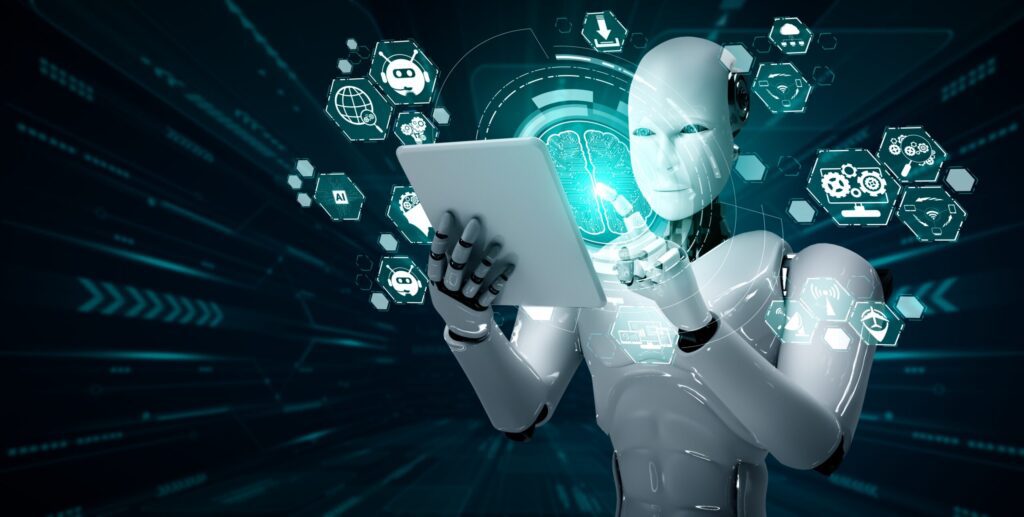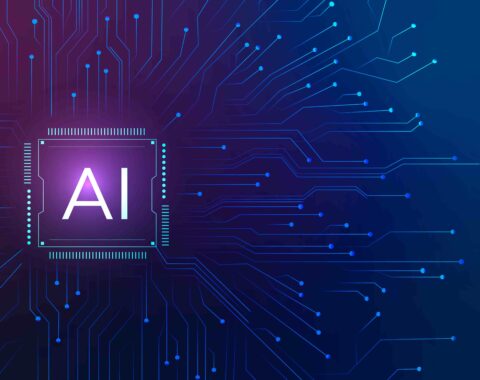We are in the early stages of an emerging digital revolution. It involves the integration of digital technology with mechanical systems, economic systems, and the natural world.
The most important one is Artificial Intelligence (AI) among all developments. Additionally, it looks like AI will keep playing a pivotal role in encouraging creativity for the foreseeable future.
People often think is this technological level only the latest phase, or is it the start of an entirely new culture? We’ve all witnessed the wonders of AI firsthand, and we’re all impressed. However, many people want to know how it actually works. Let’s start with the fundamentals of AI.

What Is Artificial Intelligence?
Artificial intelligence (AI) has fascinated people since 1950. It is built on digitizing and processing tasks and acts like a human brain. This opens up new avenues for research in areas like education, solving issues, and the transmission of information.
Additionally, to the basic and societal intelligence. There are a few fields of life that are benefitting from AI-based innovations. It includes optimization for search engines, arithmetic reasoning, probability, and the finance sector.
As a result, we’ve saved money on less paperwork, less labour, and fewer mistakes due to human errors. However, early forms of AI left the more complex cognitive tasks to humans. These are:
Auto-Learning Machines
Using a method called “machine learning,” we can teach computers to analyze data. Moreover, derive significant inferences. So, it is the backbone of many artificial intelligence systems.
Finding irregularities
The potential to instinctively recognize mistakes or details that differ noticeably from other parts of the information. It is known as the detection of anomalies. So, there are some applications where this AI offer significant support. The most common one is the identification of malignancies in an MRI scan. In addition, it offers support in the prevention of fraudulent credit card purchases.
Artificial vision systems
Programs can analyze visual data and make sense of it with computer vision. Self-driving automobiles, for instance, rely heavily on computer vision. It involves actions like deciphering road markings, signals for traffic, and other types of vehicles.
Computers can now identify and react to human speech. Additionally, write with the help of a technology called natural language processing. Natural language processing systems are currently something you frequently deal with.
You can spot this technology through your smartphone’s text prediction feature. Moreover, the online search engine’s ability to return results that satisfy your search query but not your precise phrase.
Mining for Knowledge
Knowledge mining is the process of gaining insight from huge, often uncontrolled datasets. It can index the information for quick lookups and provide you with new perspectives.
The Various A.I. Varieties
There are two primary categories of artificial intelligence (AI). This portion of the article will serve as an illustration of these two categories.
1 – Inadequate or Weak AI Systems
In this branch of AI, programs are built to address simpler issues. These systems take in data, run it through a series of natural language processing steps, and then display the results. These systems are able to provide a response based on information and historical figures.
However, they are limited in their ability to deal with situations that are outside of that remit. Therefore, this classification has limits.
Weak artificial intelligence is most clearly shown by virtual assistants like Apple’s Siri and those produced by Google and Amazon.
So, it is a terrific first step toward a future job in the field since AI is now in high demand.
2 – High Level Artificial Intelligence
Powerful AI can accurately mimic the functioning of the human brain. We may also categorize AGI (Artificial General Intelligence) and AIS (Artificial Superintelligence) here.
This field creates systems and models with the capacity to interpret data and make choices independently. Powerful artificial intelligence (AI) may be seen in interactive robots.
Additionally, it is also present in self-driving automobiles in the form of systems that have been trained on massive data sets.
Furthermore, it can make judgments with the help of an artificial neural network. Moreover, such algorithms can extrapolate future outcomes from existing data
Why did AI Become So Significant?
These are the two primary drivers of AI’s rise to prominence. One is the exponential growth in the volume and velocity of data creation. The other is the exponential growth in the data processing and interpretive abilities of computers.
So, it is a terrific first step toward a future job in the field since AI is now in high demand,
Scope of AI: Is it any mystery to you why AI is becoming increasingly popular?
The most important ones are:
- Computing power is becoming cheaper.
- Increased Data Volume
- More Accurate Algorithms
The goal of this synthetic neural network is to mimic neural circuits like the human brain. It is like a network of artificial cells.
What AI Developments Want To Achieve?
We see constant developments as it wants to achieve the following goals:
1 – Automation & Problem Solving
Artificial intelligence (AI) aims to develop systems that can automate processes and handle difficult issues, much like a person would.
2 – Natural Language Process
The purpose of natural language processing and understanding is to provide computers with the ability to understand, analyze, and produce human speech that is suitable for a given situation.
3 – Data Learning for Adaptation
The goal of artificial intelligence is to design intelligent machines that can adapt to new situations and refine their actions based on the information they’ve gathered.
4 – Data Interpretation & Pattern Recognition
Artificial intelligence (AI) aspires to enable robots to interpret visual data and recognize patterns, just as humans do.
5 – Independent Systems That Can Take Self Decision
The objective is to create autonomous systems that can make sound judgments based on their own information without human intervention or oversight.
6 – Better Human- Machine Interaction
The goal of artificial intelligence is to develop interfaces and systems that improve human-machine interaction by fostering more natural conversation and teamwork.
7 – Legalized AI Systems
More and more attention is being paid to making sure that AI systems are accountable and legitimate in their operations, which means making sure they don’t violate people’s privacy or societal norms.
8 – Interactive Robots
Artificial intelligence (AI) in robotics attempts to build robots that can interact with and learn from their physical surroundings, as well as complete tasks and navigate independently.
9 – Achieving Artificial General Intelligence (AGI):
The primary goal is to acquire a degree of intelligence in machines similar to human minds. So, it can able to developing and execute a wide variety of intellectual activities.
10 – Ongoing Developments
Research in the field of artificial intelligence (AI) is constantly evolving, discovering novel methods, and using cutting-edge approaches in order to increase AI’s usefulness and scope.
Conclusion
We have covered many basic approaches to artificial intelligence including its goals for the future. Hope it gave you insight into the fundamental approach of AI including what exactly AI is and how it aims to mimic neural networks in the future. Moreover, we briefly discussed various uses and varieties of AI. In addition, there are significant concerns in the community about how AI will influence the labor market. Additionally, it will eventually dominate many facets of society. However, AI is always developing, and further improvements are on the horizon.
Keep following TeraSoft blog for more insight and the latest updates.


